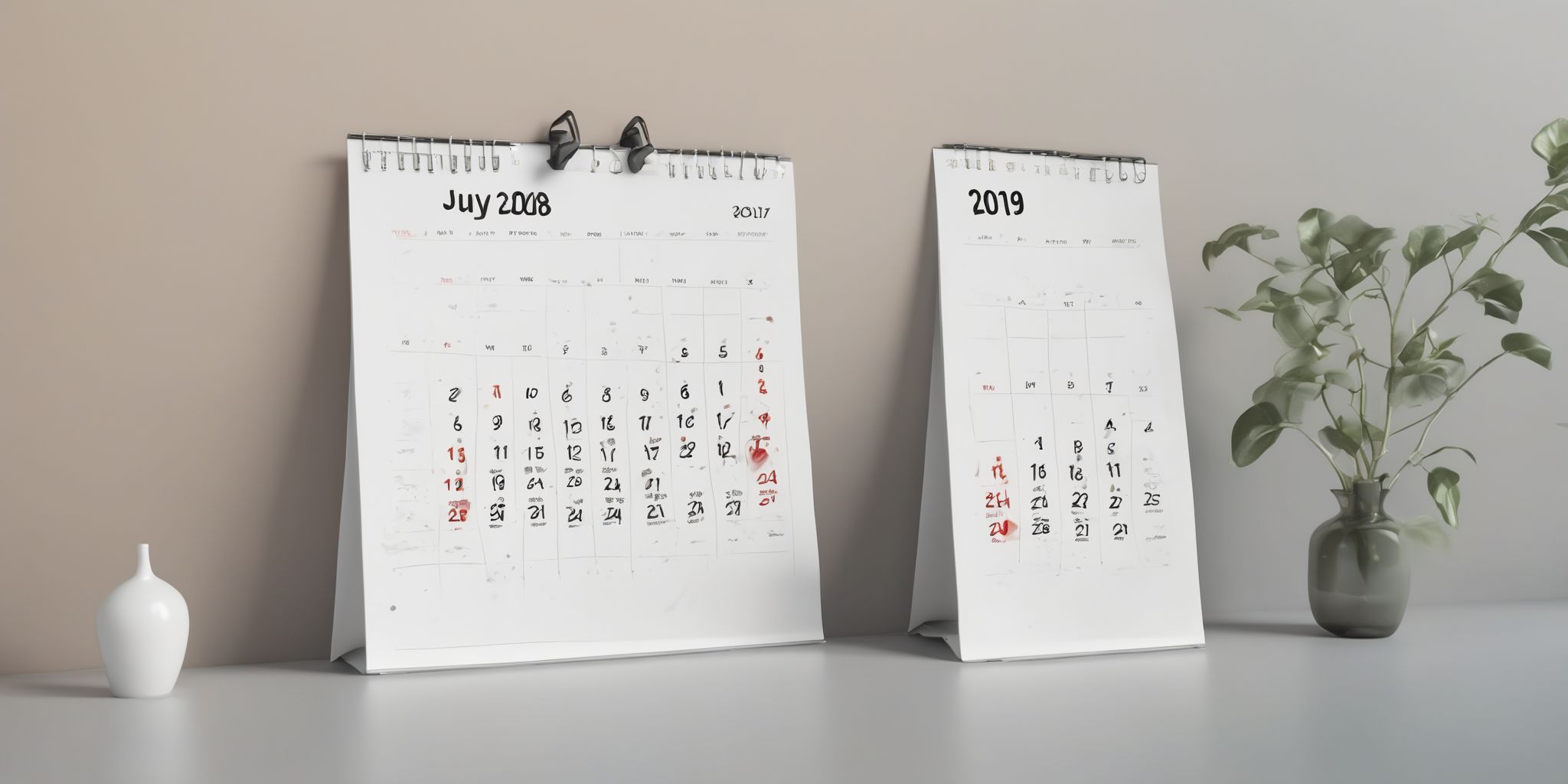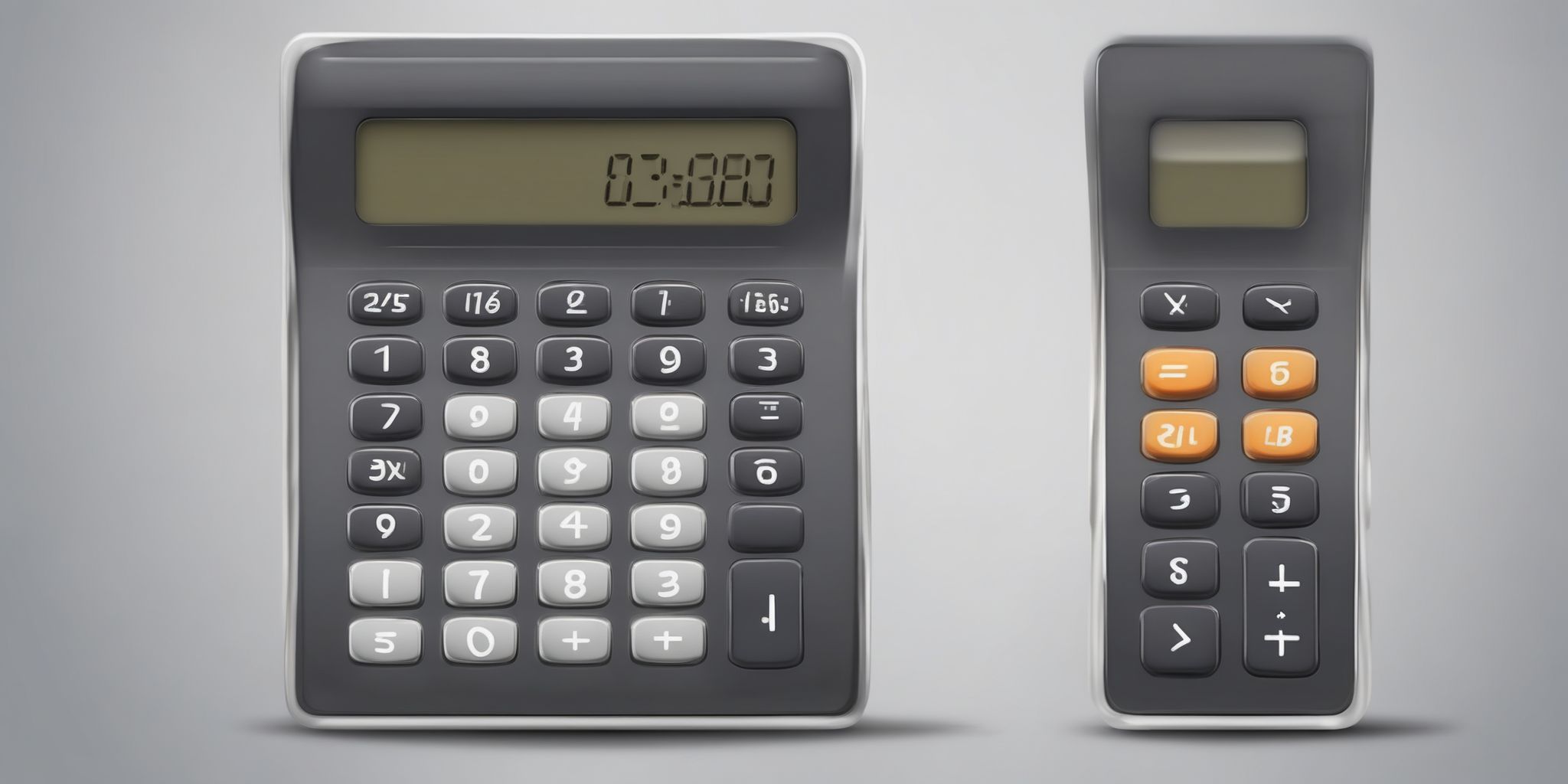How to make a budget spreadsheet
Are you tired of managing your expenses manually? Are you looking for an efficient way to track your income and spending? A budget spreadsheet might be just what you need.
By following a few simple steps, you can create a customized budget spreadsheet that suits your financial needs and goals.
In this article, we'll walk you through:
- Choosing the right software,
- Calculating your income,
- Categorizing your expenses, and more.
With a budget spreadsheet at your fingertips, managing your money can be easier and more effective than ever before. Let's dive in and take control of your finances!
Setting up your budget spreadsheet
Choose a platform for your budget spreadsheet
A platform for a budget spreadsheet needs to have specific features. These include:
- Customizing categories
- Tracking expenses and income
- Creating budget templates
- Calculating differences between actual expenses and budgeted amounts
When choosing a platform for a budget spreadsheet, user-friendliness is key. It helps in:
- Making the software easy to use
- Efficient data entry
- Understanding and navigating the software effectively
Prioritizing user-friendliness allows individuals to:
- Work smarter and more efficiently
- Manage personal finances effectively
- Make the budgeting process smoother
- Make budgeting more accessible for users of all experience levels
Decide on the layout of your budget template
When setting up your budget template, it's important to have distinct categories for your income and expenses.
These categories should be clearly defined to make tracking and analysis easier.
For income, you can create subcategories like salary, freelance income, and investments.
This gives you a comprehensive view of the money coming in.
Similarly, for expenses, you can have fixed expenses (rent, mortgage, insurance) and variable expenses (groceries, utilities, dining out).
This breakdown helps you see where your money is being spent and where you can potentially save.
By adding a budget column and using conditional formatting, you can easily compare your actual expenses to your budget.
This offers a quick overview of your financial situation.
Organizing your budget in this way simplifies the process and helps you make better financial decisions.
Create categories for your budget
Creating effective budget categories involves including both income and expenses.
Income categories can include salary, freelance income, and other revenue sources.
Expenses categories can be divided into fixed expenses like rent, mortgage, and utilities, as well as variable expenses such as groceries, dining out, and entertainment.
Efficiently organizing these categories provides a clear overview of money flow.
Further subcategorizing expenses into specific items helps track spending accurately.
Setting up a budget dashboard or worksheet with these categories enables effective financial monitoring.
When determining budget amounts, consider actual expenses and financial goals.
Tools like Excel budgeting templates simplify this process and serve as smart budget planners.
Techniques such as conditional formatting in Excel visually indicate overspending or underspending, aiding in informed financial decisions.
Include headings for income and expenses
When creating a budget template, it's helpful to start by identifying main categories for income and expenses.
Follow these steps:
- Create separate sections labeled "Income" and "Expenses" in the budget worksheet.
- This helps individuals easily input their financial data.
- Break down income and expenses into subcategories for better organization.
- Subcategories under "Income" can include salary, freelance income, and other earnings sources.
- Subcategories under "Expenses" can include rent/mortgage, utilities, and food expenses.
- Categorizing this way gives a clear overview of financial inflows and outflows.
- This makes it easier to manage personal finances efficiently.
- By following these steps, a structured and user-friendly budget spreadsheet can be created.
- It supports effective financial planning and budgeting.
Entering your financial information
Enter your monthly bills into the spreadsheet
To effectively manage your finances using a budget spreadsheet, follow these steps:
- Enter all your recurring monthly bills, such as rent, utilities, insurance, phone, and internet bills.
- Include variable expenses like groceries, dining out, fuel, and clothing.
- Categorize these expenses accurately in the budget template.
- Consider adding subcategories within the monthly bills section to detail each expense individually.
- This will help you track expenses efficiently and analyze your spending patterns.
- By diligently entering all expenses into the spreadsheet, you can work smarter towards achieving your financial goals and making informed budget decisions.
Input your monthly expenses
Monthly fixed expenses that you should include in your budget are:
- Rent/mortgage
- Insurance premiums
- Car payments
- Transportation costs
- Loan payments
- Property taxes
- Child care expenses
- Tuition fees
- Streaming TV subscriptions
- Memberships
On the other hand, variable expenses that change monthly and should be considered in your budget are:
- Groceries
- Utilities
- Clothing
- Personal care
- Entertainment
- Gas
- Home and car repairs
- Credit card payments
- Medical bills
- Pet care
- Charitable donations
To effectively track these expenses, you can use a budget column in your Excel spreadsheet. This allows you to compare actual expenses to budgeted amounts. Utilizing a budget spreadsheet with conditional formatting can help you identify overspending or underspending, enabling you to adjust your financial goals accordingly. Budgeting apps and customizable templates on Microsoft Excel and Google Drive can assist you in monitoring fixed and variable expenses, establishing financial goals, and saving efficiently following zero-based budgeting principles.
Calculate your total income
To calculate your total income, first identify all your income sources. These can include salary, freelance income, and investment returns. List each income source in your budget spreadsheet's income worksheet. This helps you keep track of all your earnings.
By accurately documenting all your income sources, you get a clear overview of your total monthly income. This ensures that no source is missed in your budget planner. It allows you to work smarter by having all your financial information in one place.
Accurately documenting your income sources also helps you set realistic spending goals and make informed financial decisions. By using your budget spreadsheet's income worksheet effectively, you can build a strong foundation for managing your personal finances.
Remember, successful budgeting relies on having a complete and accurate overview of both your income and expenses.
Formatting your budget spreadsheet
Apply formulas to calculate totals
Formulas can help calculate totals in a budget spreadsheet.
For example, in Microsoft Excel, formulas can sum up income and expenses.
This provides a clear financial picture.
By setting up formulas, individuals work smarter as the program does the math for them.
These formulas accurately determine total income and expenses in a budget template.
Users can track spending goals and manage their budget effectively.
Excel features like conditional formatting help users visually analyze their spending habits.
Applying formulas in a budgeting spreadsheet is crucial for personal finance management.
It helps achieve financial goals and maintain stability.
Use colors or shading to differentiate sections
Colors or shading can be helpful in a budget spreadsheet. They help separate different categories, like income and expenses. This makes it easier for users to see and understand their financial information. Each category can have a specific color or shade, making it simple for users to find what they need. This visual separation improves the user experience and makes budgeting more efficient. Users can quickly navigate their budget and stay organized.
Colors and shading can also highlight important areas, like spending goals and subcategories. By using colors strategically, users can create a personalized and easy-to-use budget dashboard that looks good and is practical.
Format numbers and percentages for clarity
To format numbers in a budget spreadsheet for clarity and ease of understanding, individuals can:
- Follow a tutorial using Excel or Google Sheets.
- Ensure that income and expenses are clearly categorized and organized within the worksheet.
Customizing the budget dashboard to include subcategories for income sources and individual expenses allows users to:
- Work smarter and track financial information effectively.
Setting up a budget column and utilizing conditional formatting can:
- Help compare actual expenses to budget amounts.
- Make it easier to identify overspending or underspending in different categories.
These methods enhance the visibility of financial data and aid in creating a comprehensive personal budget tailored to individual financial goals. Leveraging these features in the Excel budgeting template enables individuals to:
- Manage personal finance better.
- Optimize their budget planning process.
In a budget template, presenting percentages for better visibility and comprehension involves:
- Incorporating a summary sheet that displays total income, expenses, and savings for the month.
- Including a donut chart that illustrates the percentage of income spent, providing a visual representation of spending habits in relation to total income.
This visual aid offers valuable insights to make informed financial decisions and stay on track with budgeting goals. Using conditional formatting to highlight cells with positive or negative differences in the budget template further enhances the presentation of percentages, making it easier to identify areas where adjustments may be needed. These strategies contribute to a more effective budgeting process and help individuals manage their finances efficiently.
Tips for effective money management
Regularly review and update your budget spreadsheet
Regularly reviewing and updating your budget spreadsheet is important for managing your finances effectively. It's best to review and update your budget spreadsheet monthly to ensure it's accurate. When updating your budget, consider changes in income, expenses, and any unexpected financial needs.
Keeping your budget spreadsheet current helps you monitor your spending, track progress towards financial goals, and make informed financial decisions. By regularly reviewing and updating your budget, you can find ways to save money, adjust spending goals, and manage your finances wisely.
Using tools like Excel budget templates, Google Sheets, or budgeting apps can simplify the process and give you a clear view of your financial well-being. A well-maintained budget spreadsheet is a sign of good financial management.
Set financial goals and track your progress
Setting financial goals is important for effective budgeting. By customizing a budget spreadsheet, individuals can work towards their goals more effectively. The tutorial outlines steps for inputting income and expenses, creating a budget dashboard that shows actual expenses versus budget amounts.
Including fixed and variable expenses in subcategories helps users track their spending accurately. The budget template also allows individuals to monitor their net income closely, which is helpful for making financial decisions. To ensure security, the tutorial recommends downloading templates from trusted sources like Microsoft Excel or Google Drive.
By using conditional formatting, the budget column helps identify overspending or underspending. This method aligns with zero-based budgeting, enabling individuals to save money and manage telecom bills effectively.
The article promotes personal finance awareness and encourages individuals to take charge of their financial well-being through smart money management strategies and budgeting tools.
Seek resources or online reviews for budgeting inspiration
When looking for budgeting inspiration online, individuals can explore different platforms. These include personal finance blogs, financial websites, and budgeting forums. These sources offer tutorials on creating budget spreadsheets and insights on managing expenses and income effectively.
By using these online resources, individuals can handle their finances more efficiently. They can also gather valuable tips on budgeting. For example, they can download a free Microsoft Excel budget template or use budgeting apps suggested by reputable financial institutions. These tools allow customization to meet specific financial needs.
Consult with a financial advisor for personalized advice
When it comes to personal finance, it's important to have clear financial goals. Specific targets, like saving for a house or an emergency fund, help individuals focus on their financial journey.
Understanding one's risk tolerance in investing is also crucial. It ensures investment decisions match their comfort level with potential financial losses. Factors like investment timeline, goals, and risk tolerance help make informed decisions to grow wealth effectively.
In budgeting, using a budget spreadsheet is a game-changer. Tracking expenses and income helps individuals understand their financial habits and make informed decisions to reach their goals. Budget templates, like Microsoft Excel or Google Sheets, offer a visual representation of financial health. Categorizing expenses and setting spending goals leads to smarter financial stability.
Managing expenses is key in personal finance. Subcategories within a budget spreadsheet give a thorough view of spending patterns. Customizing the sheet, including budget columns and calculating differences, helps monitor financial progress. Conditional formatting can highlight areas where expenses exceed or fall below the budget, enabling adjustments for financial efficiency.
FAQ
What are the important steps to follow when creating a budget spreadsheet?
Important steps when creating a budget spreadsheet include identifying income sources, tracking expenses accurately, categorizing expenses, setting financial goals, and regularly updating and reviewing the budget.
For example, creating separate columns for income and expenses, using formulas to calculate totals, and comparing actual expenses to budgeted amounts.
How can I categorize my expenses in a budget spreadsheet?
You can categorize your expenses in a budget spreadsheet by creating separate columns for different categories such as housing, transportation, food, entertainment, and utilities. Use formulas to sum up expenses within each category and track your spending effectively.
What are some common mistakes to avoid when making a budget spreadsheet?
Some common mistakes to avoid when making a budget spreadsheet include not updating it regularly, underestimating expenses, and not including a miscellaneous category for unexpected costs.
Is it necessary to include a savings category in a budget spreadsheet?
Yes, it is important to include a savings category in a budget spreadsheet to ensure you are actively saving money for future expenses, emergencies, or financial goals. This category helps track progress, prioritize savings, and prevent overspending.
How often should I update my budget spreadsheet to ensure accuracy?
It is recommended to update your budget spreadsheet at least once a month to ensure accuracy. Regular updates will help you track your expenses and adjust your budget as needed.


